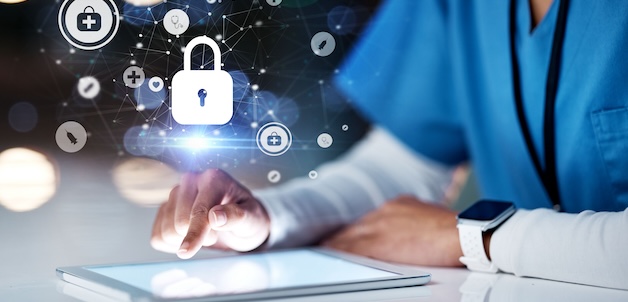
You’re busy. You have a lot on your plate each day. Still, nothing causes spiking stress levels more than the phrase: You’ve been hacked.
We all know that data breaches are costly. One cyber report states that the average cost of a breach was $394,000. But in healthcare, the cost is much higher at $717,000.
What are cybercriminals after? Patient data. From care facilities to individual practitioners to large hospitals, cyberattacks can net any cybercriminal a windfall.
For you, it simply becomes a headache. A big one. Data breach costs can extend well beyond financial losses. You can lose the trust of your patients, erode confidence in those you do business with, and receive penalties and fines for not properly securing sensitive patient data.
What does that look like? How do you protect patient data and ensure a secure work environment for you and your staff? It’s not as difficult as you think. It takes awareness and consistent action.
User Settings
Everyone on staff may have access to a desktop on-site. Likewise, they have mobile devices that allow them to work from anywhere. Do you have privacy safeguards, security safeguards, and password management strategies to keep information safe?
Many data breaches are the result of human error and internal theft. That’s why you don’t want to give employees access to more than they need to do their jobs. If you don’t have policies and procedures on how employees should configure user settings and access data, now is the time to set it up.
Encrypt Data
Many organizations have a plan to keep data safe internally, but forget about protecting data as it moves from place to place. Is patient data safe when you access it from an app? Or transfer data from your internal system to a third-party program? What about texting?
HIPPA regulations have strict guidelines for keeping data safe. The right encryption protocols ensure that data remains secure no matter how it’s viewed or accessed.
Third-Party Security
Data shows that only 45 percent of company apps are used regularly, while 56 percent are Shadow IT, or owned and managed outside of IT. If you use an app or have it anywhere on the platform, it should be vetted properly for security.
When working with third-party programs, you must ensure proper security standards for your peace of mind and to ensure you meet HIPAA regulations. Encrypt any data you send between systems, and only send the necessary information required for the third party to fulfill its duties.
Keep Systems Updated
It may seem like an easy step, yet this is increasingly becoming a problem as facilities utilize more Internet of Things (IoT). A hacked computer can cause problems; a hacked medical device can be deadly.
It’s time to set up a system that keeps every digital device you use current and up to date. Each endpoint should be up to date so there isn’t a hole for criminals to get their hands on your data. Automate and update security patches to close vulnerabilities and security holes.
Perform Security Assessments
You don’t know what you don't know. In order to protect patient data, you need to perform risk and security assessments regularly, as required by HIPAA. Routine assessments can reveal areas where you are most at risk, giving you a chance to secure minor issues before they become full-blown problems.
Protecting Patient Data Doesn’t Have to be Difficult
What it does take is an understanding of the process. It might look different from one organization to another, but the building blocks ensure you set appropriate guidelines into play.
Need help? We can help assess your systems, locate the best areas to upgrade, and implement tools to increase security throughout your facility. It’s about creating security and peace of mind.
For IT Strategy, Cloud Conversion, or Help Desk Services reach out to us at Silver Linings Technology 360-450-4759.


